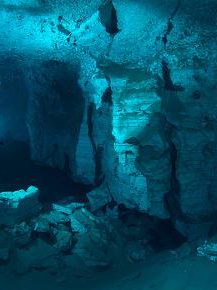A cheap and easy way to trap centuries of supply
 An Australian expert has put forth a proposal that could protect the nation from water scarcity for generations.
An Australian expert has put forth a proposal that could protect the nation from water scarcity for generations.
The National Water Bank idea is simple, turning massive natural stores of underground water into subterranean dams.
Storing groundwater in the ground could ensure the supply for hundreds of years, Director of the National Centre for Groundwater Research and Training Professor Craig Simmons says.
An underground dam is closer to a concept than it is to a structure.
“Underground dams have two big advantages over surface dams – first, they lose little of their water to evaporation and second, they are cheaper to build,” Dr Simmons says.
“Instead of vast earthworks and flooded valleys, you just need a few pumps or soaks to inject water at the right time into carefully-researched aquifers. That water can then generally be recovered at need.”
The storage ability comes from low-cost items including infiltration ponds, injection bores, computer models and sensors rather than from far more costly earthworks, concrete and manual labour associated with major dams.
“If the amount of water being stored and discharged from an aquifer is known, it can always be managed sustainably,” Dr Simmons says.
“Like a financial bank balance, the idea of a National Water Bank means being able to know, at any given time, how much you have on hand, and what are your deposits and withdrawals.
“It is vital we better understand our national groundwater storage capacity, its recharge rates, and the potential for us to augment and top up our aquifers with artificial recharge,” he says.
The idea of a National Water Bank was given new impetus by the fifth report of Intergovernmental Panel on Climate Change (IPCC) last month.
It warned that “climate change will affect groundwater [in Australia] through changes in recharge rates and the relationship between surface waters and aquifers.
“Dryland diffuse recharge in most of western, central and southern Australia is projected to decrease because of the decline in precipitation, with increases in the north and some parts of the east because of projected increase in extreme rainfall intensity.”
Professor Simmons says a National Water Bank would outlast many existing projects and structures by years, and can potentially benefit the whole continent, not just particular regions.
“All we need to do to achieve this is invest wisely in the necessary science, technology and management skills,” he says.
“Water science and training are not high cost items, relative to other activities like building huge dams or ports. They represent a form of 'infrastructure' that lasts for generations and only needs topping up, not repair.
“They pay off immediately in water savings and help keep water prices low for everyone. They provide insurance against drought, climate change, and the loss of water-dependent industries, towns and landscapes. They can reduce the economic and social costs of drought greatly.”
Professor Simmons added that the opportunity to build a National Water Bank will put Australia in front of the world's wise water managers at a time of looming global water scarcity.








 Print
Print